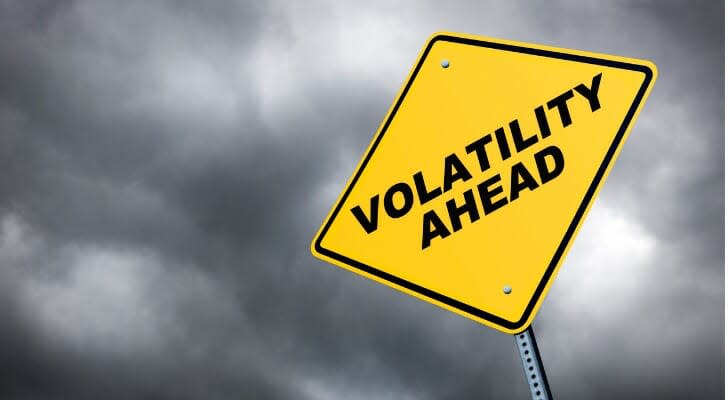How Implied Volatility Is Used and Calculated
When trading stocks or stock options, there are certain indicators you may use to track price momentum. Implied volatility, which measures how likely a security’s price is to change, can be useful for determining whether the market is set for bearish or bullish movements. It can also be important when pricing options contracts. If you trade stocks or stock options, it’s important to understand how implied volatility works and what it can tell you. Keep in mind that venturing into options trading or beginning to do technical analysis is best done with the guidance of a financial advisor.
Implied Volatility, Definition
Implied volatility is a forward-looking metric that’s designed to gauge how volatile the market may be in the future. This measure of volatility doesn’t predict whether the price of a stock, or any other type of security, will move up or down. Instead, it’s used to assess how likely it is that a security’s price will be sensitive to volatility in the broader market.
When implied volatility is high that can signal that a large price swing is ahead, but it won’t tell you which way the swing will move. Similarly, low implied volatility can be a sign that a security’s price is set to remain relatively stable, without any rapid up or down movements.
What Implied Volatility Tells Investors
If you’re looking at the stock market in general, then implied volatility is often used as a guide for tracking bullish and bearish swings. When investor sentiment leans toward an increase in prices, then implied volatility may decrease as the market turns bullish. On the other hand, if investors see prices trending down over time, you end up with a bear market and higher levels of implied volatility.
That’s important since how you invest may depend on the mood of the market. If prices are headed toward a downturn, for example, you might use that as a buying opportunity to pick up stocks at a discount. If stocks are trending higher, then you may use that as a guide for choosing when to sell to maximize profits.
Implied Volatility and Options
Implied volatility is most often used by options traders and is determined using option pricing models. If you trade options and understand how to read implied volatility, then you can use that information to choose entry or exit points for trades. By applying this metric, you can potentially get a sense of what an option’s future value will be relative to its current value.
What’s important to remember is that implied volatility is not an accurate forecasting tool for determining which direction a stock’s price will move. You also need to be aware of how certain events may trigger an increase or decrease in volatility surrounding a particular security.
For example, the release of a quarterly earnings report or the announcement of a merger can affect volatility levels and in turn, stock prices. When trading options, using implied volatility can help you identify a range from the high to low point of a stock’s price before the option expires. Specifically, it can tell you whether your beliefs about which way a stock’s price is headed are supported by the general market consensus.
How to Calculate Implied Volatility
As mentioned, implied volatility is calculated using an option pricing model. One option is the Black-Scholes model, which factors in current market price of a stock, options strike price, time to expiration and risk-free interest rates. While there is a specific formula for this model, it can be complicated to follow and there’s no room for error. Additionally, this model is only useful for evaluating European options, which can only be exercised on the day they expire.
There’s also the binomial model, which uses a tree-style diagram to illustrate volatility at varying levels. With this model, you get lots of possibilities for which way a stock or option’s price could go. You might use this pricing model if you’re trading American options, which are options that can be exercised at any time prior to the expiration date.
While these models are handy to know about, the easier way to determine implied volatility is to use an online implied volatility calculator or choose an online brokerage that offers advanced stock screeners. A stock screener that filters for implied volatility can save you time and effort when trying to determine which stocks or options to invest in. This is something you don’t get at every brokerage, so it’s important to compare online trading platforms carefully.
Using Implied Volatility for Options Trading
Implied volatility is not a magic crystal ball, though it can give you some insight into how the market as a whole views a particular security. When using implied volatility to trade stocks or options, there are other things to consider as well, including:
Supply and demand balance
Time value of an option
Other technical indicators
In terms of supply and demand, both can impact implied volatility so it’s important to be aware of how they’re trending when investing in a particular stock or option. Higher demand can lead to higher prices, which can trigger higher implied volatility and send option premiums higher. The opposite happens when demand is low so it’s important to understand the push and pull effect supply and demand can have.
Time value also matters. The farther out an option’s expiration date is, the more room there is for implied volatility to increase. A shorter window to expiration, on the other hand, can help keep a lid on implied volatility and minimize the odds for wide pricing swings.
Finally, consider what other technical indicators might suggest about which way a stock is headed. For example, you might look at things like moving average or average true range to get a feel for stock pricing. Likewise, you might want to study charts to look for certain patterns, such as double bottom or double top, that can indicate how a stock’s price is trending now and where it might go next.
The Bottom Line
Implied volatility is an important concept to understand if you trade options or plan to add that to your investment repertoire. While implied volatility is not necessarily an exact predictor of stock price movements, it can serve a purpose in helping you make more informed decisions about when to enter or exit an options trade.
Tips for Investing
Consider talking to a financial advisor about how to use implied volatility when making investment decisions. If you don’t have a financial advisor yet, finding one doesn’t have to be complicated. SmartAsset’s financial advisor matching tool makes it easy to connect with professional advisors in your local area. It takes just a few minutes. If you’re ready, get started now.
One way you can get a quick and relatively accurate overview of your investing is by taking advantage of a free, easy-to-use investment calculator.
Photo credit: ©iStock.com/DNY59, ©iStock.com/ottoblotto, ©iStock.com/Andrey Bukreev
The post How Implied Volatility Is Used and Calculated appeared first on SmartAsset Blog.



